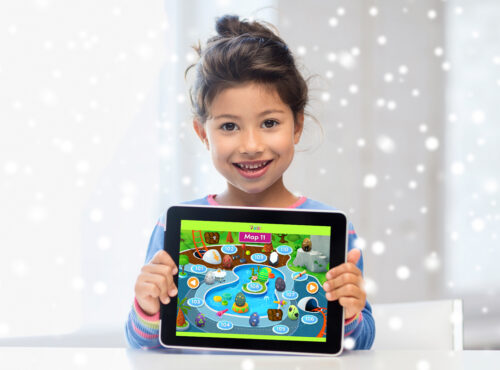Allan Dougan
Global Head of Education, 3PLearning.com
If you told me thirty years ago that I’d one day be writing articles for the paper, I’d have laughed at you
I grew up in the bitter economic wasteland that was Glasgow in the 1980s, where illiteracy went hand in hand with widespread social deprivation. All the ingredients were there: high unemployment, limited resources for learning, and a legacy of parents and grandparents who never completed formal schooling. As a result, many of my peers never learned to read and write.
But I was one of the lucky ones. And even though I went on to become a maths teacher, I’d have to say my true debt lies with words, not numbers. They were my ticket out of the cycle of poverty; one that consumed contemporaries who never got past the vital hurdles of reading a letter or filling out a job application.
30 years later and on the other side of the world, the literacy divide remains. In the 2019 NAPLAN data, it’s indigenous students, students affected by family unemployment, and students from remote areas who make up the bulk of those achieving below the minimum standards for reading and writing.
While commentators have been quick to point the finger at schools and teachers in the past, it’s clear the real root of the issue is socioeconomic disparity. COVID-19 should have woken us up to this fact when we realised a disturbing number of Australian children don’t even have a stable roof over their heads, let alone a personal laptop for Zoom lessons.

We need to start closing the gap. ABC Reading Eggs – a popular online reading program – has already kicked things off by pledging $1 to The Smith Family foundation for every family that creates a free account before September 30.
The money will go to support the education of kids in need through the Read, Learn, Empower fundraiser. Families and schools who already use ABC Reading Eggs can also take part by uploading a video of their children or class using the program, with the creators of ABC Reading Eggs, Blake eLearning, donating a 12-month online subscription to The Smith Family for every video entered. The money raised will support The Smith Family’s education programs, like Learning For Life, which helps more than 56,000 young Australians from disadvantaged backgrounds succeed at school and to create better futures for themselves.

But perhaps the best thing we can do is to promote a culture of literacy, starting at home. Here are three simple steps parents can take to ensure the next generation of young learners develop a sound grasp of the written word.
-
Create a print-rich environment
As printed material is steadily exchanged for digital, kids have less opportunity to passively engage with words around the house – unless they plug into a device. Books, magazines, and newspapers will provide vital exposure, but you can use even simpler alternatives for young learners. Help them prepare some labels to organize their room, or create signs to put up next to household items.
-
Encourage young learners to write
It’s important that kids get a feel for pen and paper, so make sure it’s available – even if you just save pieces of scrap paper for them to practice handwriting individual letters. More advanced learners can make extended writing a daily activity by keeping a diary or journal.
-
Read together
Taking the time to read with your child really is the best thing you can do to support literacy development. Make sure you read aloud, pointing to each word as you go and breaking down complex or unfamiliar words into individual sounds. Team the reading with simple questions for comprehension too (e.g. “what do you think will happen next?”, “which character would you want to be?”).
If we’re going to bridge the literacy gap, we also need to acknowledge that these initiatives won’t be as simple as they sound for some families. That’s where schools and governments can do their bit by supporting and resourcing early learners who might not have a shelf of books at home, or a parent confident enough to help them.
Whatever initiatives we take, let’s join forces. Teaching children to read and write is never an easy task, and we can’t palm it off to vulnerable families any more than we can outsource it to schools or policymakers. Instead, let’s make literacy everyone’s responsibility – just as it’s every child’s right.
To view on YouTube:
You may also like to read:









